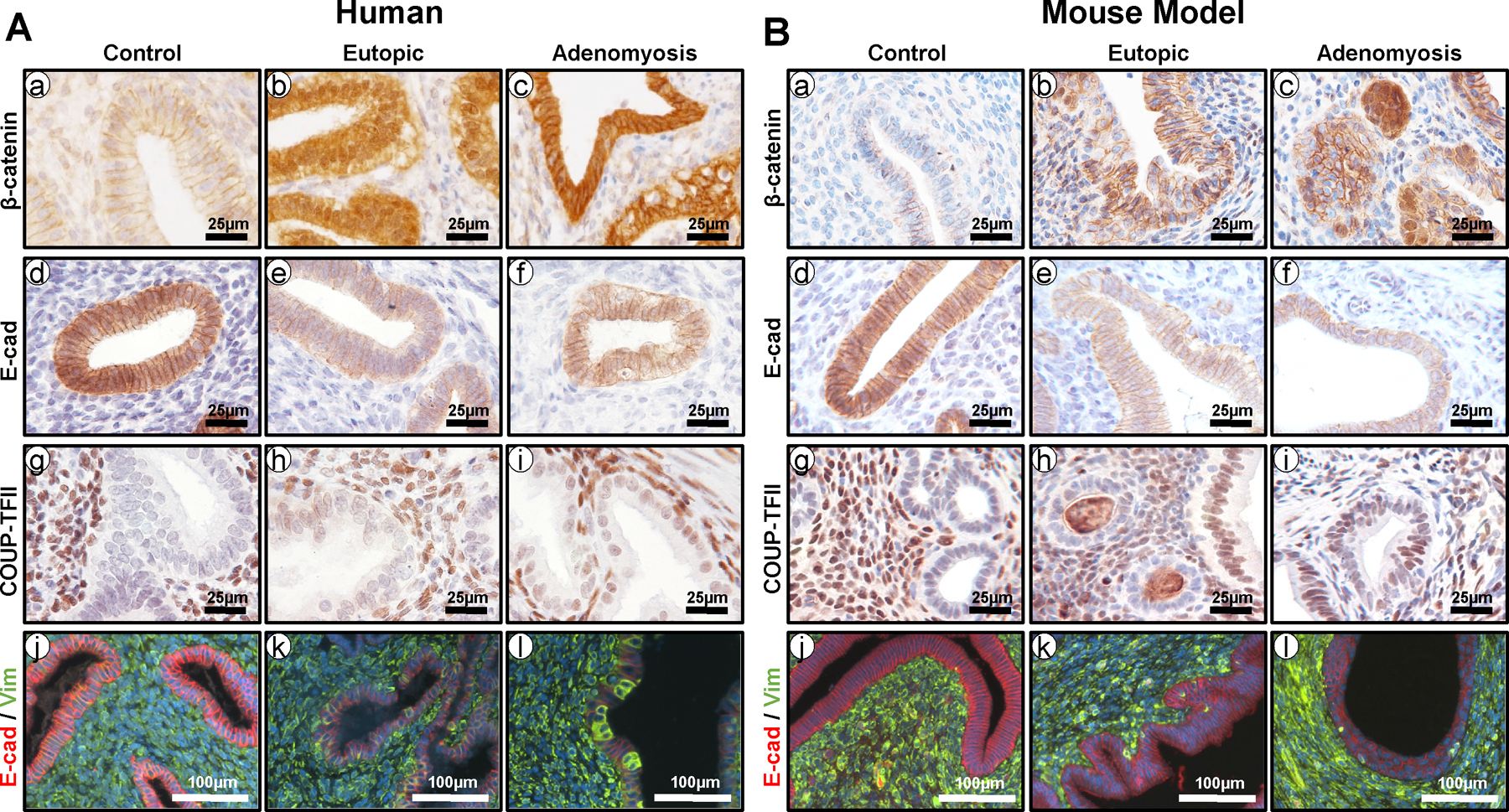Figure 1.

The role of aberrant β-catenin activation in EMT and adenomyosis. (A) Representative immunostaining images showing the levels of β-catenin (a-c), E-cadherin (d-f), COUP-TFII (g-i), and E-cadherin/vimentin (red/green; j-l) in endometrium from control women (a, d, g, and j) and eutopic endometrium (b, e, h, and k) and adenomyosis lesions (c, f, i, and l) from women with adenomyosis. (B) Representative immunostaining images showing the levels of β-catenin (a-c), E-cadherin (d-f), COUP-TFII (g-i), and E-cadherin/vimentin (red/green; j-l) in endometrium from control mice (a, d, g, and j) and eutopic endometrium (b, e, h, and k) and adenomyosis lesions (c, f, i, and l) from mice with β-catenin activation (Pgrcre/+Ctnnb1f(ex3)/+).
